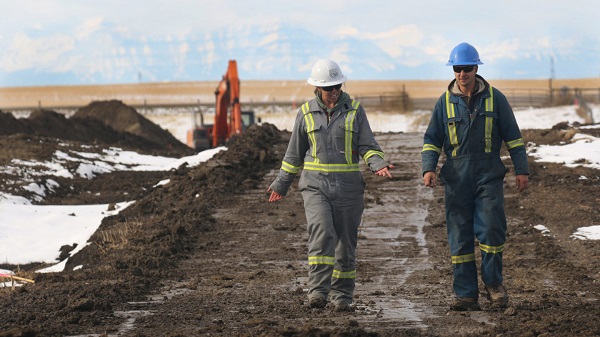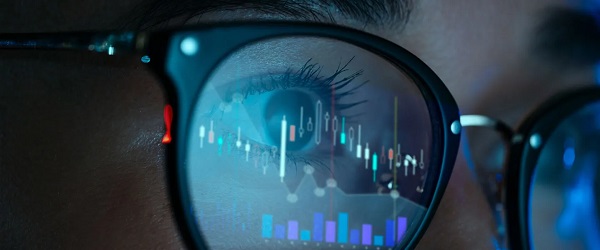Alberta
For second year in a row, Alberta oil and gas companies spend more than required on cleanup

From the Canadian Energy Center
By Grady Semmens$923 million spent cleaning up inactive wells, sites and pipelines in 2023
As a business owner, Ryan Smith values few things more than predictability when it comes to the oil and gas market and the demand for his company’s services.
That’s why knowing that next year in Alberta, the regulator requires at least $750 million worth of work cleaning up inactive oil and gas wells and other legacy energy infrastructure is tremendously helpful for the CEO of Calgary-based 360 Engineering & Environmental Consulting.
“Having a minimum spend in place for the province makes the market more predictable and consistent, which in turn helps our clients and our business plan for the future, which is a good thing,” says Smith, whose company has completed more than 5,000 site closure activities in Canada and internationally since 2015.
“Site closure has really emerged as a growth market over the last decade, especially in Western Canada where the regulatory systems for oil and gas are more advanced than anywhere else we are exposed to. It is an integral part of the energy lifecycle, and if it is done well it adds a lot of value to the industry.”
The Alberta Energy Regulator (AER) introduced an industry-wide minimum “closure” spending requirement in 2022, part of Alberta’s Inventory Reduction Program to accelerate the remediation of inactive oil and gas wells, facilities and pipelines across the province.
The mandatory quota determines the minimum level of work a company must conduct primarily to decommission and reclaim a proportion of its inactive inventory.
Inactive wells are defined as those that have not been used for six months or a year, depending on what they are being used for. When a company decides that they will not reactivate an inactive well they decommission it through a process called abandonment.
A well is considered successfully abandoned after it is cleaned, plugged with cement, cut to a minimum of one meter below the surface and covered with a vented cap. After abandonment comes remediation and reclamation, where the land around the well is returned to the equivalent of its original state.
The first two years under the new rules saw Alberta’s energy industry significantly exceed the minimum closure requirements.
In 2022, companies spent more than $696 million, about 65 per cent more than the initial threshold of $422 million. The AER increased the minimum spend to $700 million in 2023, which producers surpassed by 22 per cent with total expenditures of $923 million.
The 2024 minimum remains at $700 million, while in July the regulator announced that the minimum spend for 2025 was raised to $750 million.
This closure work does not include remediation of oil sands mining sites, which is handled under the Mine Financial Security Program, nor does it include the closure of orphan wells (wells without a legal owner) managed by the industry-funded Orphan Well Association.
Gurpreet Lail, CEO of Enserva, an industry association representing energy service companies, suppliers and manufacturers, says there was an initial rush of closure work when the quotas were first put in place, but activity has since become more even as companies develop long-term closure plans.
“A lot of the low-lying fruit has been taken care of, so now companies are working on more complex closure files that take more time and more money,” Lail says.
Facility owners say that Alberta’s rules provide direction for planning closure and remediation work, which in the past may have been put on hold due to the ups and downs of the oil and gas market.
“When commodity prices are up, everyone is focused on drilling more wells and when prices are down, budgets are strained for doing work that doesn’t bring in revenue. Having a minimum spend makes sure closure work happens every year and ensures there is longer-term progress,” says Deborah Borthwick, asset retirement coordinator for Birchcliff Energy, an oil and natural gas producer focused in Alberta.
Over the last few years, Birchcliff has budgeted more than $3 million for annual facility closure work, far above its required minimum spend.
The company completed 11 well abandonments and decommissioned 23 facilities and pipelines in 2022, according to its latest environmental, social and governance report.
Borthwick says having the closure quota for 2025 already set has allowed it to plan ahead and line up the necessary service companies well in advance for next year’s remediation work.
Alberta
So Alberta, what’s next?

Albertans, not Ottawa, should shape Alberta’s future. The Alberta Next Panel is hitting the road to engage directly with Albertans and chart a path forward for the province.
Albertans are frustrated after 10 years of punitive policies, enacted by the federal government, attacking Alberta’s economy and targeting its core industries.
Chaired by Premier Danielle Smith, the Alberta Next panel will bring together a broad mix of leaders, experts, and community voices to gather input, discuss solutions, and provide feedback to government on how Alberta can better protect its interests, defend its economy, and assert its place in Confederation.
The panel will consult across the province over the summer and early fall to ensure that those living, working, doing business and raising families are the ones to drive Alberta’s future forward. The work will include identifying solutions advanced by Albertans on how to make Alberta stronger and more sovereign within a united Canada that respects and empowers the province to achieve its full potential. It will also include making recommendations to the government on potential referendum questions for Albertans to vote on in 2026.
It will consider and hear from Albertans on the risks and benefits of ideas like a establishing an Alberta Pension Plan, using an Alberta Provincial Police Service rather than the RCMP for community policing, whether Albertans should consider pursuing constitutional changes, which (if any) changes to federal transfer payments and equalization Albertans should demand of the federal government, potential immigration reform that would give the provincial government more oversight into who comes to the province, and changes to how Alberta collects personal income tax. Albertans will also have the opportunity to put forward their own ideas for discussion.
“This isn’t just about talk. It’s about action. The Alberta Next Panel is giving everyday Albertans a direct say in the direction of our province. It’s time to stand up to Ottawa’s overreach and make sure decisions about Alberta’s future are made here, by the people who live and work here.”
“Right now, there is a need to restore fairness and functionality in the country. Years of problematic policy and decisions from Ottawa have hurt Albertan and Canadian prosperity. I am honoured to be asked by Premier Smith to participate in the Alberta Next Panel. This panel is about listening to Albertans on how we build a stronger Alberta within a united Canada, to which I, and the Business Council of Alberta, are firmly committed.”
Chaired by Premier Danielle Smith, the panel includes 13 additional members, including elected officials, academics, business leaders and community advocates:
- Honourable Rebecca Schulz, Minister of Environment and Protected Areas of Alberta
- Brandon Lunty, MLA for Leduc-Beaumont
- Glenn van Dijken, MLA for Athabasca-Barrhead-Westlock
- Tara Sawyer, MLA-elect for Olds-Didsbury-Three Hills
- Bruce McDonald, former justice, Court of Appeal of Alberta
- Trevor Tombe, director of fiscal and economic policy, the University of Calgary School of Public Policy
- Adam Legge, president, Business Council of Alberta
- Andrew Judson, vice chairman (prairies), Fraser Institute
- Sumita Anand, vice president, Above and Beyond Care Services
- Melody Garner-Skiba, business and agricultural advocate
- Grant Fagerheim, president and CEO, Whitecap Resources Inc.
- Dr. Akin Osakuade, physician and section chief, Didsbury Hospital
- Dr. Benny Xu, community health expert
- Michael Binnion, president, Questerre Energy
Albertans have a choice: let Ottawa continue calling the shots—or come together to chart our own course. What’s next? You decide.
Key facts:
- Town hall dates and sites, along with other opportunities to participate in this engagement, are available online at Alberta.ca/Next. Exact locations will be posted in the weeks ahead of the event, and Albertans will be asked to RSVP online.
- The panel’s recommendations will be submitted to government by Dec. 31, 2025.
- It is anticipated that the panel will add additional members in the coming weeks.
Related information
Related news
 ]
]


Alberta
Alberta poll shows strong resistance to pornographic material in school libraries

From LifeSiteNews
A government survey revealed strong public support, particularly among parents, for restricting or banning sexually explicit books.
Albertans are largely opposed to their children viewing pornography in school libraries, according to government polling.
In a June 20 press release, the Government of Alberta announced that their public engagement survey, launched after the discovery of sexually explicit books in school libraries, found that Albertans strongly support removing or limiting such content.
“Parents, educators and Albertans in general want action to ensure children don’t have access to age-inappropriate materials in school libraries,” Demetrios Nicolaides, Minister of Education and Childcare, said.
“We will use this valuable input to guide the creation of a province-wide standard to ensure the policy reflects the priorities and values of Albertans,” he continued.
READ: Support for traditional family values surges in Alberta
The survey, conducted between May 28 to June 6, received nearly 80,000 responses, revealing a widespread interest in the issue.
While 61 percent of respondents said that they had never previously been concerned about children viewing sexually explicit content in libraries, most were opposed to young children viewing it. 34 percent said children should never be able to access sexually explicit content in school libraries, while 23 percent believed it should be restricted to those aged 15 and up.
Similarly, 44 percent of parents of school-aged children were supportive of government regulations to control content in school libraries. Additionally, 62 percent of respondents either agreed or strongly agreed that “parents and guardians should play a role in reporting or challenging the availability of materials with sexually explicit content in school libraries.”
READ: Alberta Conservatives seeking to ban sexually graphic books from school libraries
The polling results come after the Conservative Alberta government under Premier Danielle Smith announced that they are going ahead with plans to eventually ban books with sexually explicit as well as pornographic material, many of which contain LGBT and even pedophilic content, from all school libraries, on May 27.
At the time, Nicolaides revealed that it was “extremely concerning” to discover that sexually explicit books were available in school libraries.
The books in question, found at multiple school locations, are Gender Queer, a graphic novel by Maia Kobabe; Flamer, a graphic novel by Mike Curato; Blankets, a graphic novel by Craig Thompson; and Fun Home, a graphic novel by Alison Bechdel.
-

 Bruce Dowbiggin1 day ago
Bruce Dowbiggin1 day agoWhat Connor Should Say To Oilers: It’s Not You. It’s Me.
-

 Business1 day ago
Business1 day agoThe Passage of Bill C-5 Leaves the Conventional Energy Sector With as Many Questions as Answers
-

 Business1 day ago
Business1 day agoFederal fiscal anchor gives appearance of prudence, fails to back it up
-

 Business1 day ago
Business1 day agoCanada should already be an economic superpower. Why is Canada not doing better?
-

 Alberta1 day ago
Alberta1 day agoAlberta poll shows strong resistance to pornographic material in school libraries
-

 Crime1 day ago
Crime1 day agoFlorida rescues 60 missing kids in nation’s largest-ever operation
-

 Banks1 day ago
Banks1 day agoScrapping net-zero commitments step in right direction for Canadian Pension Plan
-

 Business8 hours ago
Business8 hours agoWhile China Hacks Canada, B.C. Sends Them a Billion-Dollar Ship Building Contract


